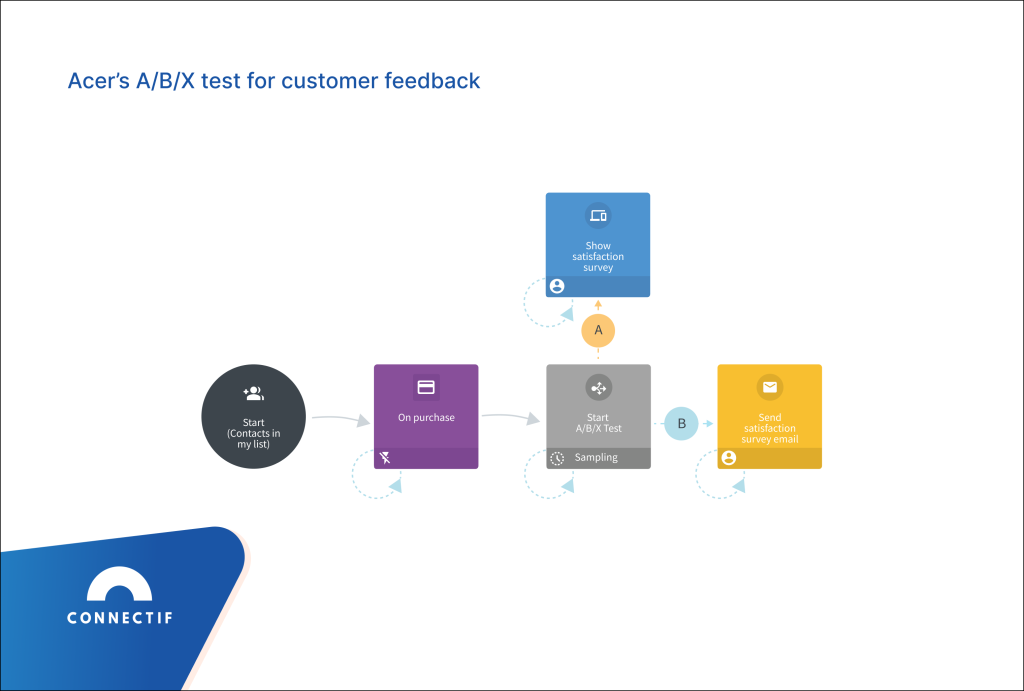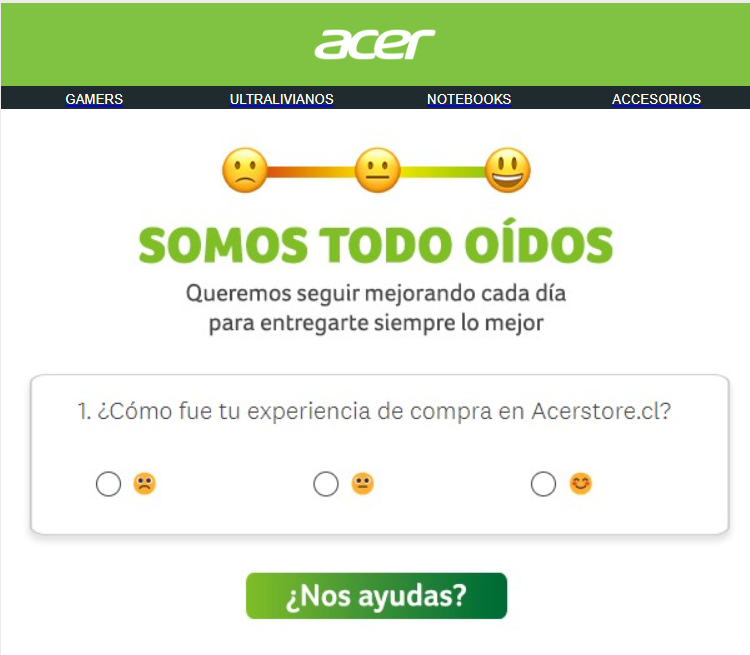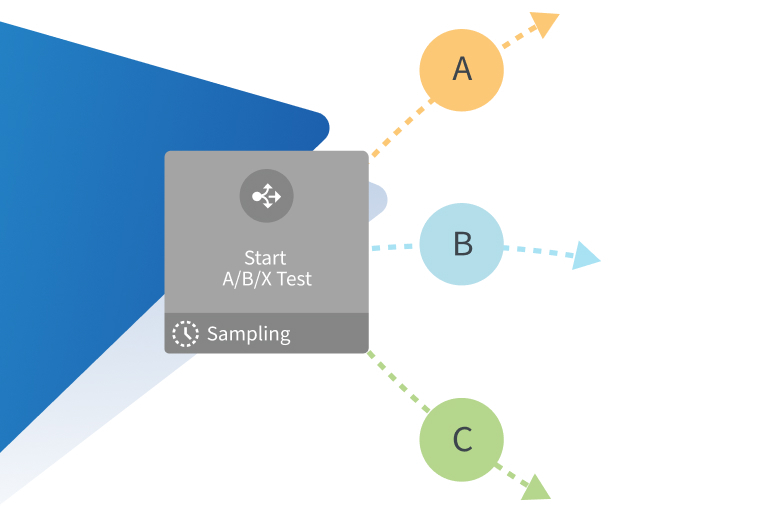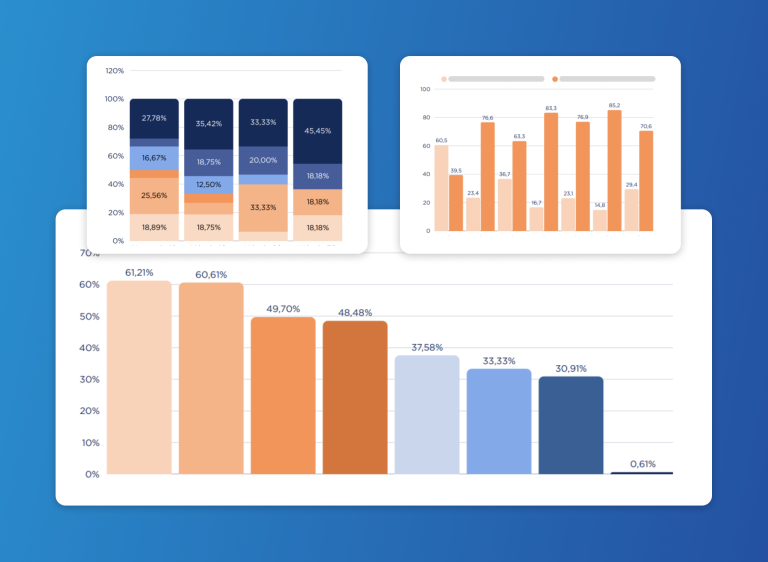Marketers in the eCommerce sector are constantly on the lookout for ways to successfully catch the attention – and sales – of online customers. With more distractions and competition fighting over the same audience, It’s vital to make sure every email you send, every paid ad you launch, and every visit to your online shop is as fruitful as possible.
Many businesses define and tweak communication strategies and marketing campaigns based on trends, what competitors are doing, or pure gut instinct. In some cases, your gut gets it right. After all, if you’re clear on who your audience is and how they behave, if your content is of high quality and relevance, and if you already keep an eye on the performance of your campaigns, you can expect to occasionally hit the nail on the head.
Although your gut is probably steering you in the right direction, it will only get you so far. Without real data to prove you’re squeezing the most out of every opportunity, this all ends up being a guessing game.
This is where ABX testing comes to the rescue. Testing allows you to stop relying on assumptions, guesswork and trends, and start implementing meaningful changes based on real user data. It’s the epitome of making data-driven decisions for your marketing strategies.
In this article, you’ll learn what it is, why it’s a key tool for marketers, and how to implement ABX testing. You’ll also gain inspiration from real examples of testing strategies implemented by our customers to help you create and fine-tune your marketing campaigns to truly captivate and convert your online audience.
What is ABX testing?
AB testing can help you identify ways to enhance the results of any strategy. From boosting engagement with your communications (increased open rates, click-through rates) to improving conversions in your online shop (increased sales, average order value), testing out your strategies can ultimately lead to creating a more memorable and enjoyable shopping experience for your customers. It can also even help you uncover new insights that you may have not considered or expected beforehand.
So, what exactly is ABX testing? To put it simply, it’s a way to compare different versions of an experience to see which performs better.
For example, let’s say you want to figure out the best way to contact your customers who have just abandoned their shopping cart, so that they return to your website and complete their purchase. That would be the goal. Then the test would be to send two (or more, hence the X in ABX) variations of the same communication to different customers who have abandoned their cart. Perhaps you want to see which image, channel or sending time works best. Choose the variable, launch the test, and then measure the difference in performance to find the most effective variation.
Once you have identified the clear winner grounded in data, you can implement this into your cart abandonment communication strategy and turn lost opportunities into sales!
ABX testing can help you resolve all kinds of things for your eCommerce. Whether you’re looking to solve pain points in your online shop, improve engagement with your campaigns, maximize ROI from your paid traffic,or even reactivate your dormant customers… there is no greater tool in your marketing toolbox to optimize conversion rates.
How to get started with ABX testing
With the right testing tool you can apply ABX testing strategies to any experience, on any channel, with any content and for any audience. When it comes to defining a test, ask yourself the following questions.
- What goal am I trying to achieve?
- How is the current experience performing?
- What is my hypothesis for the current performance?
- What variable do I want to test?
- What audience do I want to include in the test?
- What do I expect the outcome to be?
Once you have answers to the above, it’s time to create the variations and run the test. Once the test is over, it’s time to draw some conclusions. The outcome of an ABX test is measured by the conversion rate achieved, whether it’s a click, a purchase, or a product page visit. You can do this analysis manually, however some testing tools, including Connectif, do all the hard work for you and tell you the clear winner and results as soon as the test is conclusive. In that case, all that’s left to do is deploy the desired change into the strategy and accomplish your goal!
Another important thing to keep in mind is in order for the result of an ABX test to be truly reliable and meaningful, the sampling needs to be statistically significant. In other words, the result of an ABX test is not down to chance but instead can be attributed to a clear cause.
For example, going back to the cart abandonment test we mentioned earlier, if you only tested the variable with a very small audience, it’s very unlikely that your results will be significant enough to come to a reliable conclusion. The higher the statistical significance, the more trustworthy the results of your ABX test will be.
Fancy getting started with your own experimentation strategies? Read on for some inspiration of the tests that you can quickly and easily implement with Connectif.
Elevate your marketing messages
The key to marketing success is the ability to resonate with your audience. It’s not just about what you say, but how you say it. ABX testing empowers you to optimize your messages and creatives across any channel, ensuring you’re delivering content that truly connects with your customers. Let’s dive into why ABX testing is a game-changer and explore some examples of content that can be tested.
You should know by now that no two customers are alike. What resonates with one might not work for another. ABX testing allows you to tailor your messaging based on demographics, preferences and behaviours. By sending the right message to the right person, you can create a personalized experience that drives engagement. ABX testing also helps you identify high-performing messages and creatives that truly resonate with your audience, leading to more clicks, conversions, and ultimately, revenue.
You can also make use of ABX testing to stay ahead of the curve. Market trends evolve rapidly; what works today might not necessarily work tomorrow. By experimenting with new messages and creative ideas, you have a data-backed way to see how they align with current trends and capture your audience’s attention.
What kinds of messaging should I be testing?
- Subject lines: Test different subject lines for your email campaigns, such as by comparing a straightforward subject line with a curiosity-invoking one to see which generates more opens.
- Call-to-Action (CTA) buttons: Experiment with different colours, wording or even placement of CTA buttons in your pop-ups and inline messages and find out which combination leads to more clicks.
- Visual creatives: Try different images or graphics in your messages to determine which resonates best with your audience. For example, you could A/B test images of people using your product versus images of the product itself.
- Message length: Test short and concise messages against longer, more detailed ones. This can help you understand if your audience prefers quick and catchy content or if they engage more with in-depth information.
- Tone and language: Experiment with different tones – humorous, professional, casual – to see which tone aligns better with your brand and engages your audience.
By testing and optimizing the messaging and creatives of your marketing strategies, you not only increase engagement and conversions but also strengthen your understanding of your audience’s preferences. In a world where customer-centricity is paramount, ABX testing is the compass that guides you towards delivering the right content to the right people, at the right time.
Below you can see an example of an ABX test workflow template that can be easily implemented with Connectif to identify the most open-worthy subject line of an email for encouraging customers to recover abandoned shopping carts.

Bicimarket, a leading Spanish eCommerce that sells e-bikes, bicycles etc created the following ABX test in order to identify the best way to acquire new subscribers via a pop-up on their online shop.

As you can see in the image, they tested three different pop-ups displaying different forms. The winning variant was then implemented in their online shop to grow their subscriber base. As a result of improving their acquisition strategy with this ABX test, Bicimarket increased their subscriber base by 21%.

Get the timing right
In the bustling world of eCommerce, the timing of communication with customers can turn a good marketing strategy into a great one. With ABX testing, you have the power to optimize sending times and elevate your eCommerce game. Let’s explore why testing different sending times is a savvy move and dive into some scenarios that showcase its magic.
By testing your sending times, you can pinpoint the golden moments when your audience is most likely to open your messages, increasing open rates and boosting your chances of engagement and conversion.
Timing is a silent persuader, too. ABX testing lets you experiment with sending times to determine when your messages best cut through the noise and capture your audience’s attention. The right timing ensures that even the best content doesn’t get lost in the digital clutter.
As well as cutting through the noise at peak times, ABX testing can help you identify the right time to send a compelling offer to your audience, which can be the difference between an abandoned cart and a successful sale.
And if you sell globally, it’s important to consider that different regions have different peak hours. ABX testing helps you adapt your sending times based on time zones, ensuring that your messages arrive when they’re most likely to be seen.
Scenarios for testing sending time:
- Morning vs. Evening: Test the waters by sending promotional emails in the morning versus the evening. Do your customers prefer browsing your products with their morning coffee or during their leisure time after work?
- Weekday vs. Weekend: Explore whether your audience is more responsive to your offers during the weekdays or if they tend to shop on the weekends. This insight can shape your weekly email schedule.
- Post-purchase follow-up: ABX test the timing of your post-purchase follow-up emails. Should they arrive immediately after the purchase, or is there an optimal timeframe for requesting reviews or suggesting complementary products?
- Flash sales: Experiment with sending alerts for flash sales. Is it better to announce them early in the morning to catch early birds, or in the afternoon to reach a wider audience?
- Abandoned cart reminders: Find out when customers are more likely to reconsider their abandoned carts. Test sending reminders shortly after abandonment, or after a slightly longer delay, to strike the right balance.
- Product launches: Experiment with sending times when introducing new products. Discover whether it’s more effective to unveil products in the morning, when people are planning their day, or in the evening when they have more time to explore.
Below, you can see an example of an ABX test workflow built in Connectif to identify the best sending time of an email. As you can see, this test includes 5 different sending times: immediately, at 10 am, at 12 pm, at 2 pm and at 4 pm.
Once each email is sent, the workflow evaluates the performance of each branch and then informs the marketer of the most effective sending time based on conversion.

Mexas, the Spanish footwear brand and client of Connectif, made use of the ABX testing functionality in our platform to identify the best sending time to improve the open rate of their newsletters. As you can see in the workflow below, they tested sending their newsletter at four different times: Friday morning, Friday afternoon, Saturday morning and Saturday afternoon.
Based on the open rate and click rate of the different branches, Mexas identified that the best time to send their newsletter was on Saturday morning at 10 am. As a result of this ABX test, Mexas implemented the winning strategy and achieved a 34% increase in average open rate of their newsletter.

Offer the best product recommendations
In eCommerce, every click and every choice holds the promise of discovery. Now, imagine tailoring those discoveries to each customer’s preferences. With ABX testing, you can fine-tune how you recommend products to your customers. Let’s uncover why ABX testing your product recommendations is a genius move and explore some scenarios that showcase its brilliance.
Customers want to feel seen and understood. ABX testing empowers you to test different product recommendation strategies, ensuring that each customer receives tailored suggestions based on their browsing and buying history.
Recommending the right products at the right time can supercharge conversions. By ABX testing your recommendation methods, you can pinpoint the strategies that entice customers to explore and purchase more.
Product recommendations aren’t just about sales; they’re about engaging your customers on a deeper level. Testing different recommendation approaches helps you create an interactive shopping experience that keeps customers coming back for more.
ABX testing lets you explore the art of cross-selling and upselling. By experimenting with different recommendation techniques, you can master the delicate balance of suggesting complementary or upgraded products.
What product recommendation strategies can be tested?
- Most visited products: Test the effectiveness of recommending products that a customer has already shown interest in. Does suggesting their most-visited products encourage them to take the plunge?
- Related products: Experiment with suggesting items that are related to the product a customer is currently viewing or has already purchased. This approach can introduce customers to a wider range of offerings.
- User-based preferences: Test offering products based on a customer’s previous purchases and browsing history. Does tailoring recommendations to their unique preferences drive higher engagement?
- Recently viewed: Explore whether reminding customers of products they recently viewed nudges them toward making a purchase. ABX testing can reveal the optimal timing for these reminders.
- Top sellers: Try showcasing products that are currently top sellers in your store. Is the popularity of these products enough to influence customers’ buying decisions?
- Seasonal recommendations: Test the impact of suggesting products that are relevant to the current season or upcoming holidays. Do customers respond positively to offers tied to specific times of the year?
- Collaborative filtering: Experiment with collaborative filtering, where you recommend products based on the preferences of customers with similar browsing histories. Does this approach enhance the discovery of new items?
The online shopping journey from browsing to purchase is a symphony of choices. ABX testing your product recommendations gives you the conductor’s baton, letting you orchestrate an unforgettable experience for each customer. By refining your recommendations through testing, you’re not only increasing sales but also sculpting a shopping adventure that feels tailor-made.
The workflow below shows how to implement a simple AB test of inline content in your online store to optimize the product recommendations for your customers. As you can see, the test consists of two branches to compare the performance of providing customers with recommendations based on A) the most purchased products and B) the most visited products in your store during the previous month.

Identify the best channel
Every channel provides a unique opportunity to connect with your audience. ABX testing empowers you to harness the full potential of each platform, ensuring your messages reach customers, resonate with them and inspire them to take action. By continuously refining your multi-channel approach through testing, you’re not only boosting engagement but also forging deeper connections on the right channel with your customers. In a world where choice is abundant, ABX testing helps you stand out in the crowd, no matter which channel you choose.
Once more, let’s first consider why ABX testing the conversion of your marketing strategies on different channels is a good idea and explore some examples of what you could experiment with.
First of all, every channel has its unique audience and characteristics. ABX testing enables you to customize your messages to fit the preferences and behaviors of every customer on every channel, ensuring your content hits the mark every time.
Different channels have varying levels of user engagement, too. By testing your content across multiple platforms, such as email, push notifications, paid ads, SMS and so on, you can uncover which channels are most effective for specific types of messages and different audience segments.
ABX testing can also help you identify the channels that deliver the best conversion rates for different content types. This valuable insight allows you to allocate your resources where they’ll have the greatest impact towards achieving your campaign goals.
Customers exhibit distinct behaviours on different channels. While some of your customers may prefer leisurely browsing through their emails, others want quick updates on WhatsApp. Whatever their preference, ABX testing empowers you to identify and tailor your approach to effectively suit their habits.
Examples of what you can test across your channels:
- Product promotions: Compare the conversion of showcasing products with detailed descriptions and images in email newsletters to visually appealing paid ad creatives that highlight the uniqueness of your products or concise, attention-grabbing product updates on WhatsApp users with direct links to purchase.
- Abandoned cart reminders: Test the effectiveness of real-time push notifications as reminders for abandoned carts compared to friendly SMS reminders, including personalized recommendations for products left behind.
- Seasonal Campaigns: Compare the effect of your website’s inline content offering immersive seasonal experiences with interactive elements with tailored ad content that aligns with the current season or holiday, incorporating relevant imagery and promotions.
- Exclusive offers: Identify which channel drives conversion best between offering exclusive discounts to your loyal email subscribers or sending time-sensitive offers through SMS to encourage immediate action.
- Product recommendations: Test which channel is the most effective for displaying product recommendations to your customers. For example, suggesting products based on previous interactions via WhatsApp or displaying the same recommendations on your website to capture customers’ attention during their browsing journey.
- Customer feedback: Test the performance of a web pop-up compared to an email requesting feedback from your customers about their recent purchase in your online store, and see which channel provides you with more responses.
Acer wanted to identify the best strategy to receive valuable feedback from their customers in order to ensure their eCommerce is providing their online shoppers with the best possible experience. With Connectif, they implemented an AB test to identify which channel performed better at gaining customer feedback after they made a purchase.


As you can see in the workflow, they compared the performance of sending a customer satisfaction survey to their customers after making a purchase directly on the website with sending the survey via email. Thanks to this test, they identified that they received more responses from the survey on their website. After implementing this strategy to all customers, they saw a 70% improvement in customer survey responses.
And as you can imagine, with so much more feedback from their customers, they were armed with plenty of insights to help them improve like never before the eCommerce experience to boost sales and revenue.
How can Connectif help with your testing needs?
In this article, we’ve shared just a handful of the unlimited opportunities that ABX testing brings to marketers who use Connectif’s marketing automation platform. Our clients have access to a library of predefined ABX test templates to dive straight into the world of experimentation, as well as having the freedom to quickly and easily build entire ABX testing strategies from scratch to improve the performance and conversion of their eCommerce, just like Mexas and Bicimarket have done.
Although Connectif is primarily recognised as a no-code marketing automation platform for data-driven marketers, the testing capacity available in our platform is definitely worth checking out! With access to a wealth of customer and channel data, the sky truly is the limit when it comes to optimizing your marketing strategies or trying something new with Connectif.
If you’d like to learn more about how Connectif can help you test your way to success, reach out for a demo today! We’d love to show you just how easy it is and the results that you can achieve from day one.




